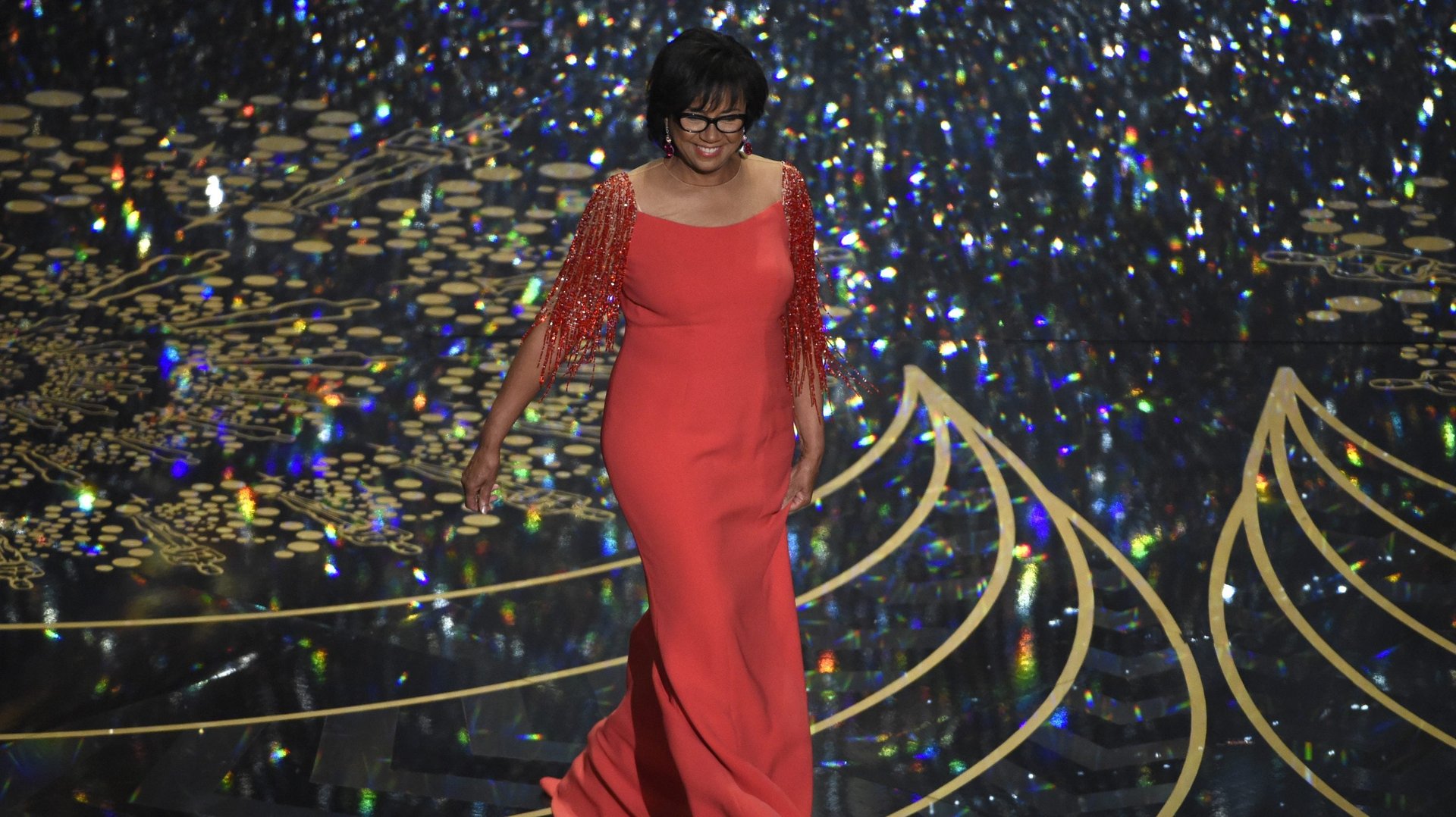How the Academy overcame #OscarsSoWhite—at least for this year
On Jan. 24, Academy of Motion Picture Arts and Sciences president Cheryl Boone Isaacs breathed a sigh of relief as the 2017 Oscar nominees were announced via streaming video.


On Jan. 24, Academy of Motion Picture Arts and Sciences president Cheryl Boone Isaacs breathed a sigh of relief as the 2017 Oscar nominees were announced via streaming video.
For the first time in Oscar history, black nominees were represented in all four acting categories. And more than half the Best Picture nominees featured diverse casts. The Academy was still slammed for failing in other measures of diversity. But the milestone put to rest a running hashtag, #OscarsSoWhite, that dominated during the past two years when there were no black nominees in any major acting categories.
“It was a very good morning,” Boone Isaacs told the New Yorker (paywall). The feat was owed in large part to changes within the Academy that ushered in a new crop of members and booted out some old-timers—which is, in fact, the third “purge” in its history to stay relevant, in the words of the film historian Daniel Smith-Rowsey.
To join the Academy, applicants need to be sponsored by two Academy members and pay $350 in annual dues for access to screenings. In 2012, the Los Angeles Times revealed (paywall) that 94% Academy voters were white and 77% were male. After the 2015 Oscars, Boone Isaacs, the Academy’s first black president, realized something need to be done to diversify the voting pool.
She started A2020, an initiative that aimed to make the Oscars—and the industry—more inclusive over the next five years. And a year later, as black talent including Jada Pinkett Smith, whose husband Will Smith was passed over for his role in Concussion, and director Spike Lee vowed to boycott the event, Boone Isaacs reportedly fast-tracked the effort.
The Academy’s board of governors approved a plan to recruit new members while retiring the voting rights of those who hadn’t been active in the industry for 10 years, with certain exceptions, the New Yorker reported. That kicked off a sweeping review of the Academy’s then roughly 6,000 members. Anyone who had been nominated for an Oscar or worked in the business for more than three decades was safe. Others had to prove their relevance—or be shifted to ”emeritus status.”
The undertaking met some resistance from Hollywood veterans like David Kirkpatrick, who argued that the Academy was “exchanging purported racism with ageism.” Longtime Academy members worried that it would constitute another “purge,” like those that occurred in the 1920s when ”talkies” pushed out talent from the silent-film era, and the 1970s when the Academy retired the voting rights of 335 old-timers (paywall) like Lou Costello to make way for a new generation of stars like Al Pacino and Candice Bergen.
In the end, 70 people, or less than 1% of Academy members, were reportedly “purged.” And 683 new members were invited to join, including current Best Supporting Actor nominee Mahershala Ali, John Boyega, Idris Elba, Luis Guzmán, Freida Pinto, Nate Parker, and (for some reason) Damon and Marlon Wayans.
The new class reportedly represented 59 countries; 46% were female and 41% were non-white.
It’s too early to tell whether these changes will have a lasting effect on the types of movies that are honored by the Academy each year. There are other industry politics that dictate who gets nominated, such as aggressive campaigning from movie studios. And of course, much like an election, you never know which way people will go—a more diverse pool may not necessarily lead to more diverse nominees and winners. “Voting is personal,” she told the magazine. “I have no influence over that.”
But at least the #OscarsSoWhite hashtag has been retired—for now.